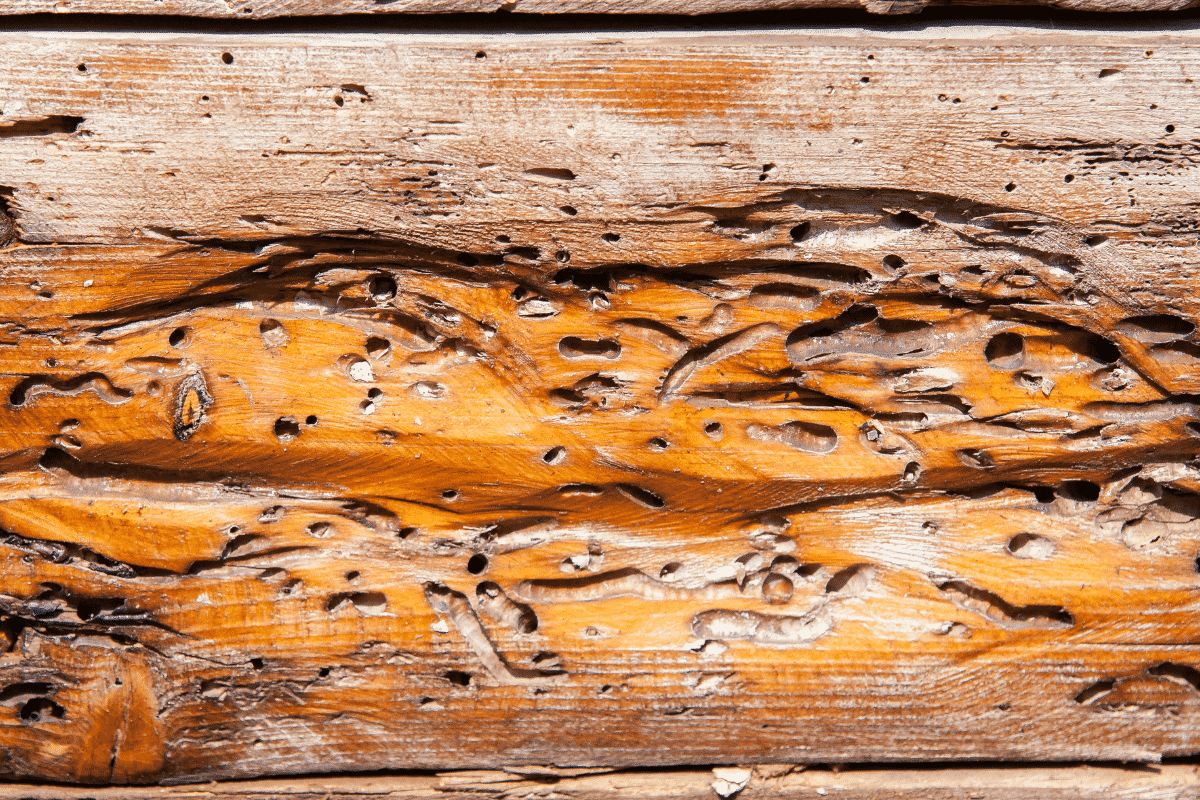Woodworm infestation is a topic that we are asked to discuss regularly. Especially as, unlike other pest problems, woodworm infestations can go undetected for years. So, it is important to know exactly what an infestation looks like, in order to be on the lookout.
1. What is woodworm exactly?
Woodworm is not actually a worm. It is an infestation caused by the wood-eating larvae of wood-boring beetles. These beetles lay eggs in certain types of wood. Larvae hatch from the eggs and then eats away at the wood. Until they reach adulthood and emerge from the wood as fully grown beetles. The larvae stage lasts up to five years, depending on the species.
There are 3 main species of wood-boring beetles in Ireland; the Common Furniture Beetle, the Powder Post Beetle, and the House Longhorn Beetle.
2. Will woodworm spread to other furniture?
In theory, yes woodworm can spread. However, only if conditions are favourable. Woodworms will only inhabit certain types of wood. Some wood-boring beetles prefer softwoods like pine or spruce. However, others prefer hardwoods like oak, ash or mahogany. Additionally, all beetles favour wood with high moisture content. So, under the right conditions, the infestation will spread.
3. What are the signs of a woodworm infestation?
There are a few signs that indicate an infestation. However, most signs are only noticeable after infestation. After the damage is done. Firstly, and most obviously, are exit holes in the wood. Caused by adult beetles emerging from the wood. The holes are between 2mm and 5mm, depending on the species of beetle. Secondly, frass is a clear indication of an infestation. Frass is essentially dust. Created by the woodworm boring into the wood. Frass is light in colour and very fine. Thirdly, but probably the least visible sign is tunnelling through the wood created by the larvae. Finally, seeing beetles (dead or alive) near infected wood is a clear indication of an infestation.
Damaged wood can also be a sign of a woodworm infestation. Especially weakened or crumbling furniture, floorboards or skirtings. However, in the absence of other woodworm infestation signs, it is important to rule out dry rot or wet rot.
4. How to tell if woodworm is active?
It can be hard to distinguish an active infestation from a previous infestation. However, if it is an active infestation, the exit holes will look fresh. Additionally, frass is a good indication of an active woodworm infestation. Especially infrequently used and cleaned areas. It is harder to identify an active infestation in rarely used areas. As there is no way to determine how fresh the frass may be.
If you have the signs of an infestation but are unsure if it is active or not, it is always worth calling a professional. Our technicians are trained to identify active or inactive infestations. And if the infestation is active, it is important to treat it ASAP.
5. Are woodworm harmful to humans?
No, they are not harmful to humans. However, an untreated infestation can be dangerous. As the woodworm eats away at the wood. Consequently, this can lead to structural failure. Left untreated, woodworm infestations can lead to expensive repairs.
6. How to get rid of woodworm infestation?
Treating such a serious issue should be left to professionals. DIY solutions will not get rid of woodworm. For more information, or for a quote, contact us today!

